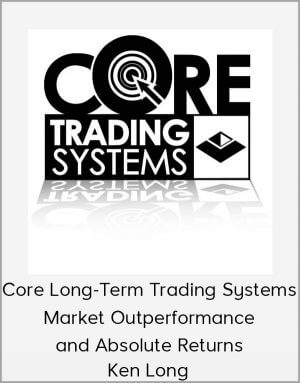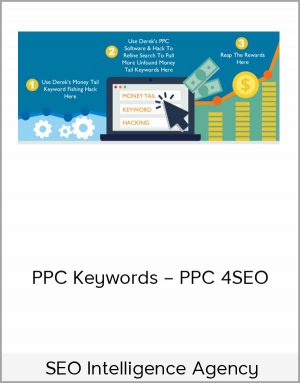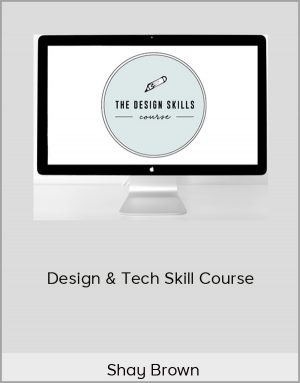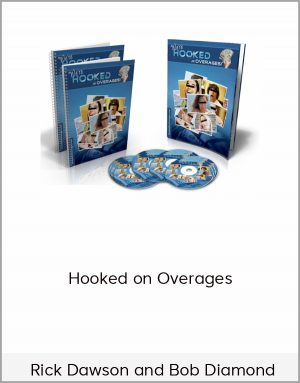Andre Chaperon – Sphere of Influence
$65.00$395.00 (-84%)
Yet this thinking is fundamentally flawed. Worse, because our thinking is misguided, the solution (a better more desirable effect) has zero chance of being created.
SalePage
Andre Chaperon – Sphere of Influence

Check it out: Andre Chaperon – Sphere of Influence
We’re living through a new reality as marketers and creative professionals. Ultra-low barriers to entry have dramatically increased competition to be heard.
In an effort to turn the world’s population into advertising eyeballs, the billion dollar social media platforms have successfully transformed everyone into a marketer with a free megaphone. Our competition can be a 13 year old kid from Alabama with an iPhone and a free Instagram or YouTube account.

Nikkie De Jager
Nikkie De Jager is a twenty-something year old Dutch makeup artist who shares her talents and techniques on her popular YouTube vlog and Instagram account. She has 13.4 million subscribers to her channel, 14m followers on Instagram, plus another 2m followers on Twitter. According to SocialBlade, her videos earn her over one million dollars each year (likely even more now as you read this).
This is our new reality.
It can be overwhelming when we think that our competition include kids still in school, kicking ass at attracting millions of eyeballs to their social channels.
Conventional wisdom says shout louder to get attention at all costs. But this is not the way to get noticed.
Conventional wisdom is based on a flawed assumption that lead volume matters more than lead quality because more leads = more sales. It’s simple math. But it’s also a red herring.
A significant part of successful marketing is counterintuitive (which this manifesto will reveal and unpack).
We don’t NEED millions of followers or tens of thousands of email subscribers to be incredibly successful. That’s the hard way, which requires random luck and good timing. That’s not a strategy, or everyone would be billionaires with six pack abs.
A repeatable strategy is to think narrower — tiny, even. Kevin Kelly’s 1,000 True Fans is a foundational concept of thinking smaller (the number itself is not important; it can just as easily be 100).
“Instead of trying to reach everyone, we should seek to reach the smallest viable audience and delight them so thoughtfully and fully that they tell others.” — Seth Godin
But to get there requires a shift in thinking.
This manifesto will likely change how you see marketing, business, what you’ve done in the past, and how you’ll likely change moving forward.
One word of warning…
As with a magic trick, you can’t unsee something that may push against the walls of your subjective reality in a way that makes you uncomfortable.
So I’ll say this: if you are happy and comfortable with your current reality about modern marketing and business, do not read further.
The thesis of this manifesto is that better prospects matter. But the reality is that prospects are not created equal and neither are customers. We get to choose the type of business we create, the people we want to do business with, and what “success” looks like to each of us.
There is a cause and effect that happens in every business; actions taken to get the attention of people (cause), and the type of prospects, and by extension, the type of customers acquired from those actions (effect).
Broadly speaking we all understand this dynamic on a basic level. But what’s interesting and revealing is how blind the majority of marketers are to the root cause of the results they see playing out in their businesses.
We live in a culture where the Band-aid solution rules supreme in every category of society. So it’s no wonder our ability to solve downstream problems by going upstream to the source, is generally nonexistent.
Example:
- Problem (effect): not enough customers
- Solution (cause): increase lead volume (clickbait, lowering barriers to entry, etc.)
Yet this thinking is fundamentally flawed. Worse, because our thinking is misguided, the solution (a better more desirable effect) has zero chance of being created.
I’ll use a really bad analogy to make the point.
You can’t lose weight by going to the gym and pumping iron and doing HIIT until your cardio system is screaming for mercy, if after each workout you consumed six donuts and washed them down with a 600ml full-sugar Coca-Cola. You can’t out-exercise the cause of the weight gain. The only intervention that will work would be to replace the upstream cause. Replacing the six donuts and Coke with something less, well … problematic. Perhaps a whole-food green smoothy made from spinach and avocado with no added sugar, would likely have an immediate positive effect.
In our world, success is not the result of a 100,000 email subscriber list that can only generate customers through coercion and the use of short-sighted tactics and loopholes that produce no long-term upside.
Shawn and I believe successful businesses are built on high-quality, long-term, happy customers. And the path to get there is based on earning lasting attention, not buying or gaming temporary attention.
Earning attention is an emergent property when we lead with empathy, serve first, provide real value, and care about who we serve (and the results they get).
In order to present the idea that we should over-invest in the process to create better prospects (cause) — because better prospects matter downstream (effect) — I’ll need to start with first principles to unpack two fundamental realities of every business on the planet.
Then I’ll explain why over-investing in creating better prospects will affect everything else you do downstream (customers, revenue, happiness, meaning, and purpose).
The journey starts with this first fundamental reality.
Fundamental Reality 1: Businesses are Systems
To help make this point, I’ll start with a universal framework that is objectively true for every business on the planet.

This basic framework is broadly useful to understand the directional flow of attention to prospects to customers. So far I’ve shared nothing you don’t already know.
Next we can think of this framework as a system once expressed.
Meaning: once this conceptual framework has been manifested in reality (as a funnel into your business), it can be thought of as a system (a set of things working together as parts of an interconnect mechanism that functions as a complex whole).

An important thing happens when we realize that our funnel (the flow of attention to prospects to customers) and business (how we capture and deliver value) is a complex system. We realize that our business is subject to the insights of systems theory.
Common sense suggests that 1 + 1 = 2 and 1 + 1 + 1 = 3. And in the world of finance, accounting, and mathematics, this is true.
But in the predictably irrational world of behavioral economics (why people do what they do, and how to influence them) and the reality that businesses are complex systems and subject to the insights of systems theory, reality can be counterintuitive.
Emergence is the outcome of the synergies of the parts of a system. The outcome of nonlinear things interacting together.
Therefore, the sum total of a system is more than its component parts. As a system evolves, its structure can transform in interesting (positive) ways, or negatively (a suboptimal outcome).
In a complex system, 1 + 1 + 1 ≠ 3.
We can’t apply simple linear 1 + 1 + 1 = 3 thinking to how we generate customers in a complex system, just because it seems intuitive. Because of emergence, 1 + 1 + 1 may equal 5, or 9. But it definitely won’t equal 3.
Jay Wright Forrester, a former professor at MIT, was the founder of system dynamics, which deals with the simulation of interactions between objects in dynamic systems.
Counterintuitive.
That was Jay Forrester’s word to describe complex systems.
“Leverage points are not intuitive. Or if they are, we intuitively use them backward, systematically worsening whatever problems we are trying to solve,” he said. “We know from bitter experience that, because of counter-intuitiveness, when we do discover the system’s leverage points, hardly anybody will believe us.”
Those last five words are probably why the majority of marketers and creative professionals spend the majority of their efforts pushing in the wrong direction.
Dr. Russell Ackoff, one of the founding fathers of systems theory, said:
“In any system, when one improves (optimizes) the performance of the parts taken SEPARATELY, the performance of the whole doesn’t necessarily improve, and frequently gets WORSE.”
Another clue came from Donella Meadows, who was an American environmental scientist, teacher, and writer. She is best known as lead author of the books The Limits to Growth and Thinking in Systems: a Primer.
In her article, Leverage Points: Places to Intervene in a System, she presented another insight into understanding how we can influence the system that drives the success of our business.
Donella revealed that the #1 place to intervene in a system to create the greatest leverage, is the mindset or paradigm out of which the system — its goals, power structure, rules, and its culture, arises.
Fundamental Reality 2: Business Is An Infinite Game
When we understand where mindset fits in the system, we get another clue how we can intervene to change cause and effect at the source.
Mindset can be defined as our paradigm and worldview — our beliefs that inform our decisions, our actions and behaviors, and inform how we see and understand the world, and our place in it.
When we revisit the directional framework I shared earlier, mindset governs everything below it.























